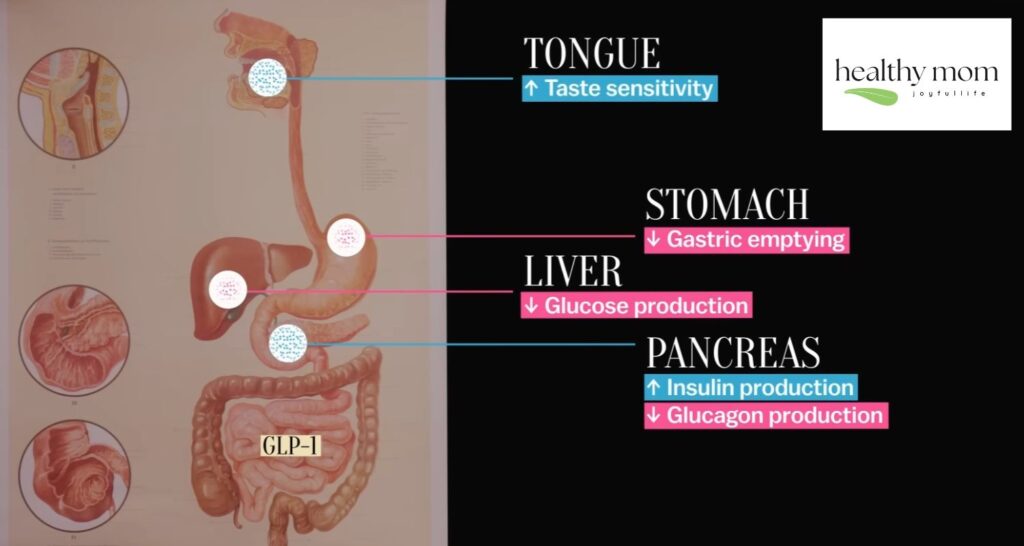Introduction
Managing diabetes and achieving weight loss are crucial for millions of people worldwide. Enter semaglutide, a groundbreaking medication that has shown significant promise in these areas. This article explores why sublingual semaglutide is set to revolutionize diabetes management and weight loss, providing a more effective and convenient option for patients.
Understanding Semaglutide

What is Semaglutide?
Semaglutide is a medication developed primarily to help manage type 2 diabetes. Its mechanism of action involves mimicking the effects of a naturally occurring hormone in the body called GLP-1 (glucagon-like peptide-1). GLP-1 has several important functions, particularly in the regulation of blood sugar levels and appetite.
Here’s a more detailed explanation:
Blood Sugar Regulation
GLP-1 enhances the secretion of insulin, a hormone that lowers blood sugar levels, especially after meals when blood sugar levels rise. It also suppresses the release of glucagon, a hormone that increases blood sugar levels, thereby helping to maintain a balanced blood glucose level.
Slowing Gastric Emptying
GLP-1 slows down the rate at which the stomach empties its contents into the small intestine. This leads to a more gradual absorption of glucose into the bloodstream, helping to prevent spikes in blood sugar levels after eating.
Appetite Suppression
GLP-1 acts on the brain to promote feelings of fullness and reduce appetite. This can help with weight management, which is particularly beneficial for individuals with type 2 diabetes, as obesity is a common comorbidity.
Semaglutide, by mimicking GLP-1, helps to manage blood sugar levels more effectively and can also assist with weight loss, making it a valuable treatment for people with type 2 diabetes. Additionally, semaglutide has shown potential benefits in reducing cardiovascular risks in patients with diabetes.
Mechanism of Action
Semaglutide works by enhancing insulin secretion, reducing glucagon levels, and slowing gastric emptying. This helps to control blood sugar levels and can also promote weight loss by reducing appetite.
Traditional Forms of Semaglutide
Traditionally, semaglutide has been available as an injectable medication or in pill form. While effective, these methods have their drawbacks, including the discomfort of injections and the need for daily dosing.
The Rise of Sublingual Medications
What are Sublingual Medications?
Sublingual medications are administered under the tongue, allowing for rapid absorption into the bloodstream. This method bypasses the digestive system, leading to faster and often more efficient drug delivery.
Advantages of Sublingual Administration
The sublingual route offers several advantages, including faster onset of action, improved bioavailability, and increased patient compliance due to ease of use.
Comparison with Traditional Administration Methods
Compared to injections and oral tablets, sublingual administration can be more convenient and less invasive, making it an attractive option for many patients.
Sublingual Semaglutide: A Game Changer
Introduction to Sublingual Semaglutide
Sublingual semaglutide is a new form of the medication that is administered under the tongue. This innovative approach promises to combine the efficacy of semaglutide with the convenience of sublingual administration.
How it Differs from Other Forms
Unlike injectable or oral forms, sublingual semaglutide offers quicker absorption and avoids the first-pass metabolism in the liver, potentially leading to more consistent and reliable effects.
Benefits of Sublingual Semaglutide
The benefits of sublingual semaglutide include ease of use, improved patient adherence, faster onset of action, and potentially fewer gastrointestinal side effects compared to oral forms.

Efficacy in Diabetes Management
How Sublingual Semaglutide Helps Manage Diabetes
Sublingual semaglutide effectively lowers blood sugar levels by enhancing insulin secretion and reducing glucagon levels. Its rapid absorption means quicker therapeutic effects, crucial for managing diabetes.
Clinical Trials and Studies
Clinical trials have shown that sublingual semaglutide is highly effective in managing blood sugar levels in patients with type 2 diabetes. Studies also indicate improved patient satisfaction due to the convenience of sublingual administration.
Patient Testimonials and Real-World Evidence
Patients using sublingual semaglutide report better blood sugar control and greater satisfaction with their treatment regimen, highlighting its potential to improve quality of life.
Benefits for Weight Loss
Role of sublingual semaglutide in Weight Management
Semaglutide, a medication initially developed for type 2 diabetes, has proven to be an effective tool in combating obesity by significantly reducing appetite and promoting weight loss. As a glucagon-like peptide-1 (GLP-1) receptor agonist, semaglutide mimics the hormone GLP-1, which is vital in regulating appetite and food intake. By activating GLP-1 receptors in the brain, particularly in areas that manage hunger and satiety, semaglutide increases feelings of fullness, decreases hunger, and leads to reduced caloric intake.
Clinical trials have shown that semaglutide can induce substantial weight loss in individuals with obesity. Participants in these studies have experienced significant reductions in body weight, achieving meaningful weight loss milestones. Besides aiding in weight loss, semaglutide has also been shown to improve various metabolic parameters, including blood sugar levels, blood pressure, and lipid profiles, enhancing overall health.
Semaglutide’s dual action in controlling blood sugar levels and facilitating weight loss makes it a comprehensive therapeutic option for those dealing with both diabetes and obesity. Its impact on weight loss is particularly valuable, as obesity increases the risk of numerous health conditions, including cardiovascular disease, stroke, and certain cancers. By addressing both diabetes and obesity, semaglutide offers a holistic approach to improving health outcomes and quality of life.
Additionally, semaglutide’s benefits extend to cardiovascular health. Studies indicate that the weight loss achieved through semaglutide use is associated with improvements in cardiovascular risk factors, such as reductions in blood pressure and better cholesterol levels. These cardiovascular benefits are crucial for individuals with diabetes, who are at higher risk of heart disease.
In summary, semaglutide is a significant advancement in managing obesity and diabetes. Its ability to reduce appetite, promote weight loss, and improve metabolic and cardiovascular health makes it a valuable addition to the therapeutic options for these conditions.
Success Stories and Clinical Evidence
Clinical evidence supports the use of semaglutide for weight loss, with many patients experiencing significant reductions in body weight. Success stories abound, showcasing the transformative impact of this medication.
Comparing Sublingual Semaglutide with Other Weight Loss Treatments
Compared to other weight loss treatments, sublingual semaglutide offers a unique combination of efficacy and convenience, making it a superior choice for many patients.
Safety and Side Effects
Common Side Effects of Semaglutide
Typical side effects of semaglutide are nausea, vomiting, and diarrhea. These side effects are generally mild and decrease over time as the body adjusts to the medication.
Specific Considerations for sublingual semaglutide Administration
Sublingual administration may reduce the gastrointestinal side effects often seen with oral semaglutide, offering a more tolerable option for patients.
Long-Term Safety Profile
Long-term studies suggest that semaglutide is safe for extended use, with no major safety concerns identified in clinical trials.
Convenience and Compliance of Sublingual Semaglutide
Ease of Use of Sublingual Semaglutide
Sublingual semaglutide is easy to use, requiring no injections or daily pills. This straightforward approach can greatly enhance patient adherence.
Impact on Patient Adherence
The convenience of sublingual administration can lead to better adherence to treatment regimens, ultimately improving health outcomes for patients.
Real-World Usage Scenarios
In real-world scenarios, patients find sublingual semaglutide to be a practical and effective solution for managing their diabetes and weight.
Future Prospects
Ongoing Research and Developments
Research into sublingual semaglutide is ongoing, with promising developments on the horizon. Future studies aim to explore its full potential and expand its use to other therapeutic areas.
Potential for Wider Use
As more data becomes available, sublingual semaglutide could become a standard treatment option for diabetes and weight management, potentially benefiting millions of patients worldwide.
Expert Opinions on the Future of Sublingual Semaglutide
Experts in the field are optimistic about the future of sublingual semaglutide, citing its innovative delivery method and impressive clinical results as key factors driving its adoption.
Conclusion
Sublingual semaglutide represents a significant advancement in the management of diabetes and weight loss. Its convenience, efficacy, and potential for improved patient compliance make it a promising option for the future. As research continues and more patients experience its benefits, sublingual semaglutide is poised to become a cornerstone of diabetes and obesity treatment.
FAQs
What is semaglutide?
Semaglutide is a medication used to treat type 2 diabetes and promote weight loss by mimicking the effects of the GLP-1 hormone.
How is sublingual semaglutide different from other forms?
Sublingual semaglutide is administered under the tongue, offering quicker absorption and potentially fewer side effects compared to injectable and oral forms.
What are the benefits of sublingual administration?
Sublingual administration provides faster onset of action, improved bioavailability, and increased patient compliance due to its ease of use.
Are there any side effects?
Common side effects include nausea, vomiting, and diarrhea, which are generally mild and decrease over time.
How can I get sublingual semaglutide?
Consult with your healthcare provider to determine if sublingual semaglutide is right

